Before Christmas, a little over a year ago, we explored Nuremberg Christmas Markets and Rothenberg-ob-der-Tauber. In addition to shopping and Christmas Markets, we explored the other attractions that the city has to offer. One of the major attractions, although not mentioned in my guide book, is to explore the Nazi Party Rally Grounds and the museum on site. The museum gives insight into this era of history and details of the major events and ideals which started the second World War. It's an emotional experience, and I feel that it is an important and educational one that visitors should not miss if they wish to understand history and the the decades in between the two World Wars, which ultimately led to the second World War.
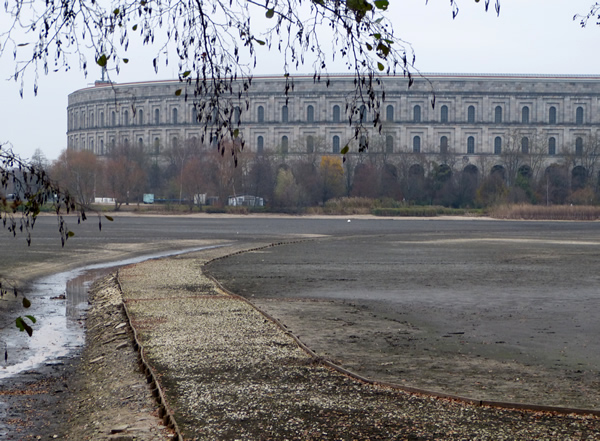
The museum has exhibitions on how Hitler wanted to be portrayed, the importance of architecture and the role it played, how the masses were influenced by Hitler and his ideals, and a visual representation of an estimation of how many groups (including Jews, homosexuals, Communists, Romani, ethnic Poles, political prisoners, people with disabilities) were murdered by the party.

Portraits of Hitler based on how he wanted to be portrayed and all released images of him had to pass certain aspects; various Nazi Party propaganda and images of Nuremberg and the Rally Grounds during the height of the party; 'My Struggle' or 'Mien Kampf' signed by Adolph Hitler; Albert Speer's architectural drawings; video/audio from the Nuremberg trials

Representation of the number of victims taken to concentration camps and killed; Nazi toy soldiers
Nuremberg was the centre of the Nazi (National Socialist) Party, and the first rallies were held here in 1927. The grounds acted as a community with many events for everyone, including the young members of society. It was quickly adopted as a way of life and engrained into society for a variety of reasons that can be read in more detail at the museum. Albert Speer engineered the grounds to show off the power of the party and Hitler; the museum goes into how this was achieved using architecture and other methods (light, banners, sound, etc).
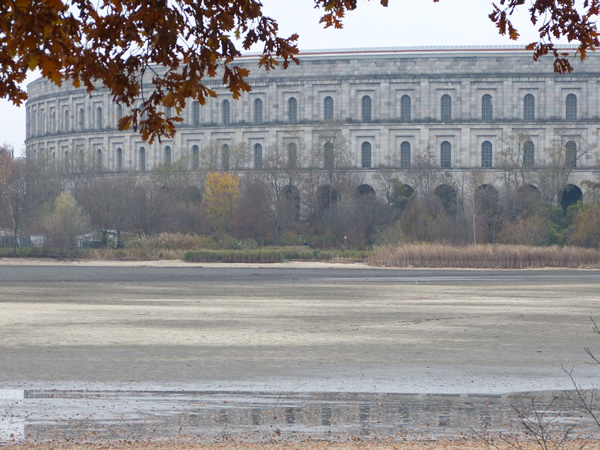
Lake and Congress Hall

Zepplinfield
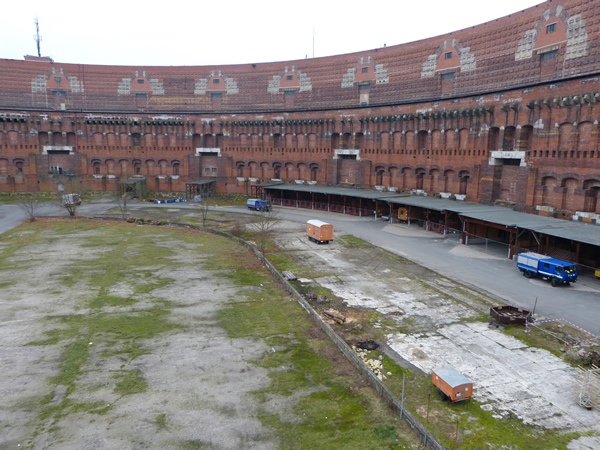
Inner courtyard of Congress Hall

Congress Hall
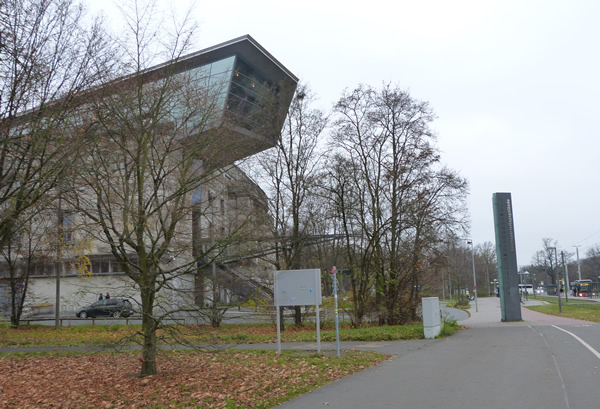
Documentation Centre - museum. This is where the tram stops for the rally grounds
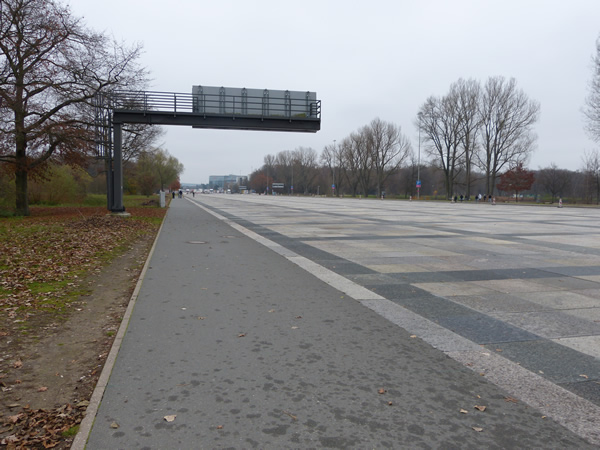
Great Street
The Nazi grounds include the Zepplin field (named after a Zepplin that landed there in 1909), stadiums, Congress Hall, a zoo, cafe, swimming pool, an exhibition space, and a lake. The zoo was opened in 1912 with the help of citizens and was maintained throughout the war. It contained over 193 species. Albert Speer designed the grounds with the 'Greet Street' in mind. It was 60 metres wide and over 2,000 metres long, laid with granite slabs, and was aligned with Nuremberg Castle to show significance of the Nazi Party to past imperial Germany. (This glorification of the past imperial days of Germany was one of the psychological desires that Hitler played upon to capture and form his community of followers.) The street would be flanked with tall towers to portray the importance and power of the party.
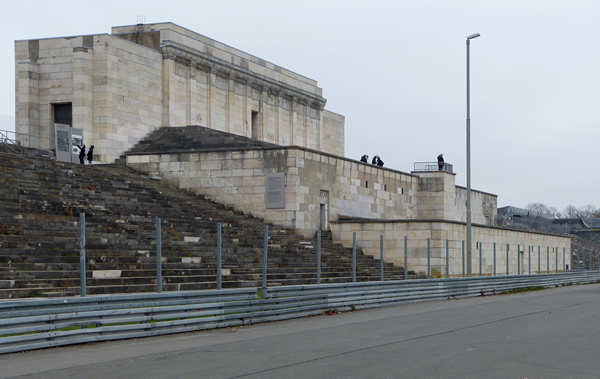
Zepplinfield
Hitler would have come out the back doors of the grandstand and went to the front and stood to address his crowd on the Zepplin Field below, which is larger than 12 football fields. With the structure around him and his height, the atmosphere and the whole experience of this place would have made him seem very powerful. In 1938, the "Cathedral of Light" took place here, which beamed floodlights into the sky and was probably spectacular.
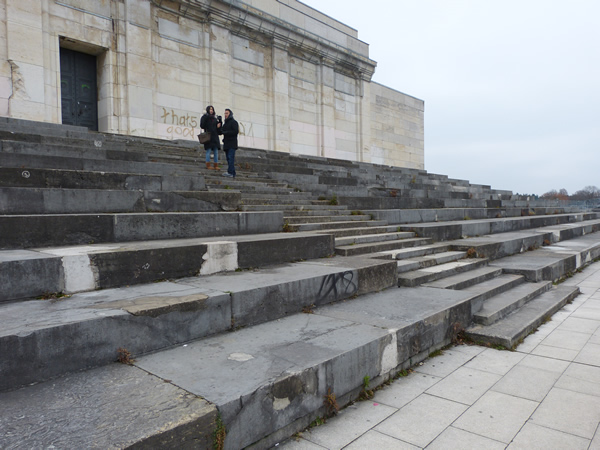
Zepplinfield
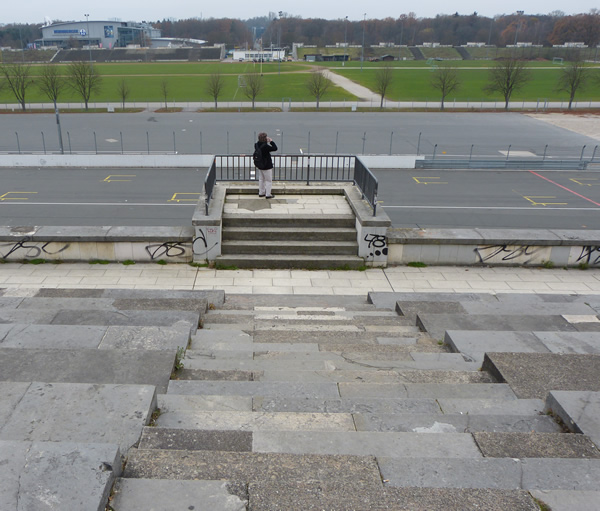
Zepplinfield - speaker area
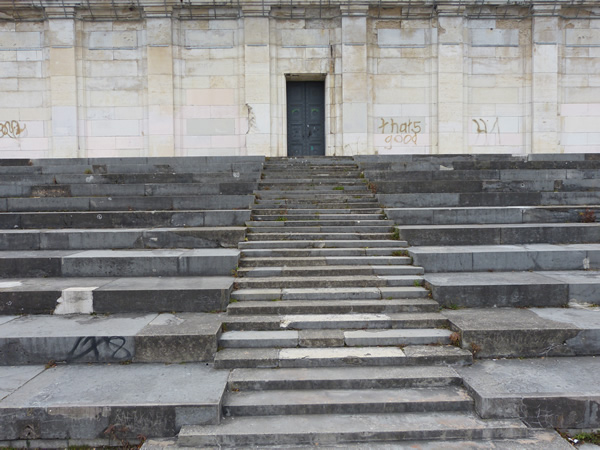
When Germany lost the war, the US held its victory parade at this grandstand, and the giant swastika was blown up. The towers on both sides were removed because they were deemed unsafe. The US were stationed here until 1994. Today, the grandstand and track outside it is used as a racing circuit (Noris ring) and for concerts.

Nuremberg trials courthouse
After exploring the grounds, we headed back into Nuremberg and got the subway to the court house where the Nuremberg Trials were held. The trials are of high importance in the world criminal justice system. The trials included representatives of different Allied countries (US, Britain, Russia, and France) whose purpose was to oversee the trials to determine if key individuals of the Nazi Party were guilty of crimes. These crimes were categorised into war crimes, crimes against humanity, and participating or planning crimes against peace. The trials were the first to be recorded with video and sound. We saw a little bit about the trials, including some original documents and recordings, in the Nazi Rally Grounds museum.
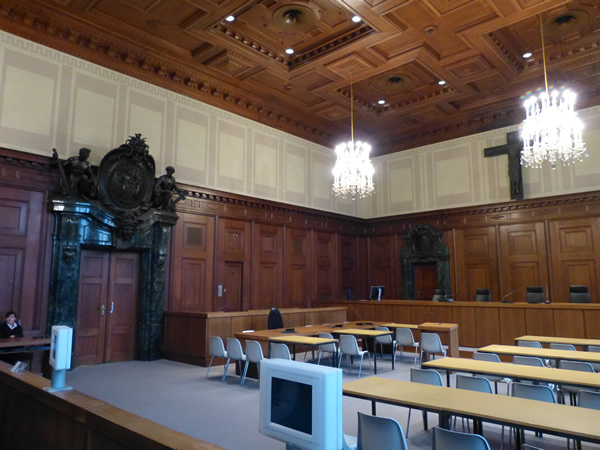
Nuremberg Trials court room
We had an English guided tour of the museum at the Nuremberg Court House, and the guide highlighted some of the important aspects of the trials and those involved and the outcomes of some of those captured and their sentence. We then saw the interior of the famous room where the trials were held. As this court room is still used today, make sure to visit it outside of work hours to avoid disappointment.
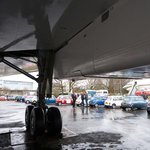
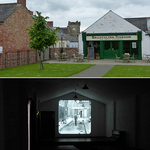

Leave a comment